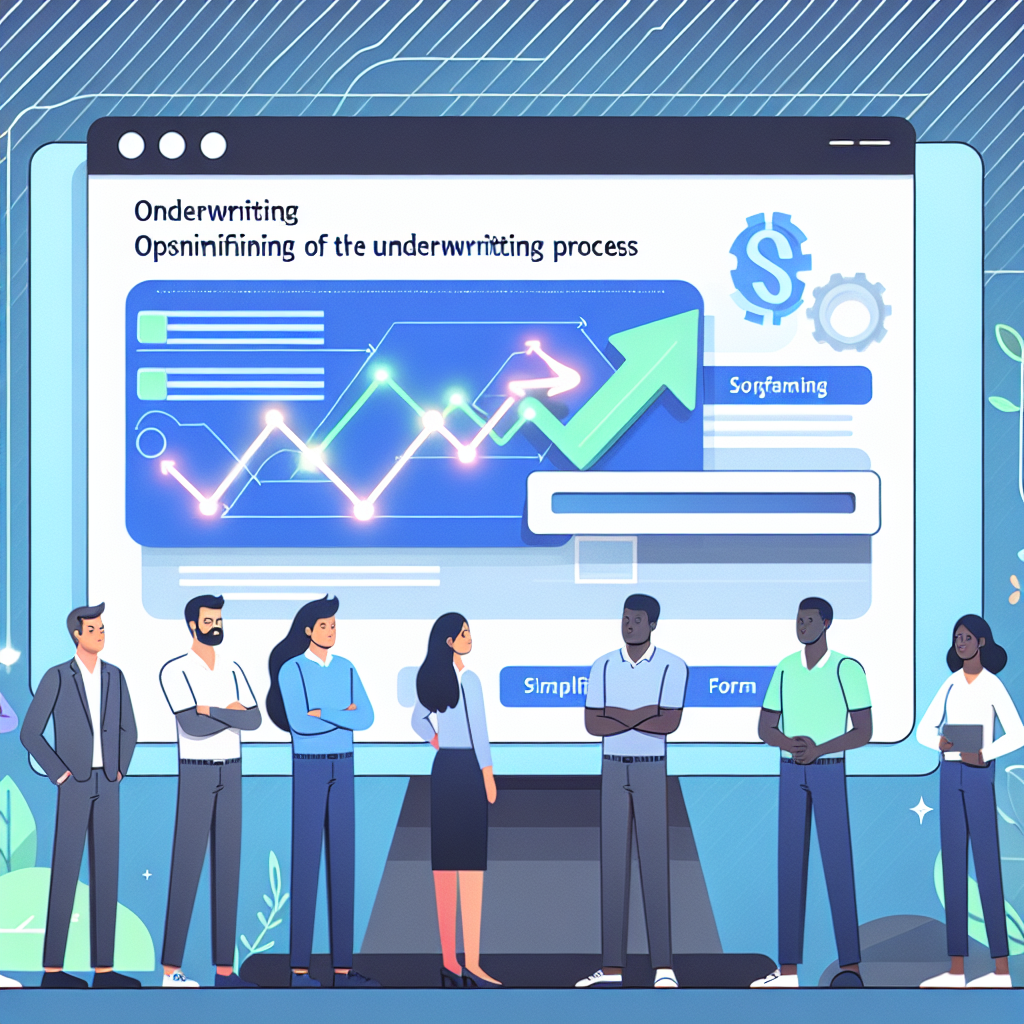-
Table of Contents
Optimize your SaaS payments and streamline the underwriting process. Take action now to improve efficiency and maximize revenue. Visit highriskmerchantprocessors.com for more information.
Automating Underwriting for SaaS Payments
Optimizing SaaS Payments: Streamlining the Underwriting Process
In today’s fast-paced digital world, Software as a Service (SaaS) has become increasingly popular. Businesses of all sizes are turning to SaaS solutions to streamline their operations and improve efficiency. However, one aspect of SaaS that often gets overlooked is the underwriting process for payments. This crucial step ensures that businesses can securely process payments and minimize the risk of fraud or chargebacks. To optimize SaaS payments, automating the underwriting process is essential.
Underwriting is the process of assessing the risk associated with a payment transaction. It involves analyzing various factors, such as the customer’s creditworthiness, transaction history, and the likelihood of fraud. Traditionally, underwriting has been a manual and time-consuming process, requiring human intervention at every step. However, with advancements in technology, automating underwriting has become a game-changer for businesses.
Automating underwriting for SaaS payments offers several benefits. Firstly, it significantly reduces the time and effort required to process payments. By leveraging machine learning algorithms and artificial intelligence, underwriting decisions can be made in real-time, allowing businesses to process payments quickly and efficiently. This not only improves customer satisfaction but also frees up valuable resources that can be allocated to other critical tasks.
Furthermore, automating underwriting minimizes the risk of human error. Manual underwriting processes are prone to mistakes, which can lead to costly errors and delays in payment processing. By automating the underwriting process, businesses can ensure consistent and accurate decision-making, reducing the likelihood of errors and improving overall payment security.
Another advantage of automating underwriting is the ability to detect and prevent fraud. Fraudulent transactions can have severe financial implications for businesses, leading to revenue loss and damage to their reputation. Automated underwriting systems can analyze vast amounts of data and identify patterns indicative of fraudulent activity. By flagging suspicious transactions in real-time, businesses can take immediate action to prevent fraud and protect their financial interests.
Moreover, automating underwriting allows businesses to adapt to changing market conditions and customer preferences. As the SaaS industry continues to evolve, so do the payment processing requirements. By leveraging automated underwriting systems, businesses can easily customize their underwriting rules and criteria to align with industry standards and customer expectations. This flexibility ensures that businesses can stay ahead of the curve and provide a seamless payment experience to their customers.
However, it is important to note that while automating underwriting offers numerous benefits, it is not a one-size-fits-all solution. Each business has unique underwriting requirements, and it is crucial to choose an automated underwriting system that can be tailored to meet those specific needs. Additionally, businesses must ensure that the automated underwriting system complies with industry regulations and data security standards to protect sensitive customer information.
In conclusion, optimizing SaaS payments by streamlining the underwriting process is essential for businesses looking to enhance efficiency, reduce risk, and improve customer satisfaction. Automating underwriting allows for faster payment processing, minimizes the risk of errors and fraud, and provides the flexibility to adapt to changing market conditions. However, businesses must carefully select an automated underwriting system that aligns with their specific requirements and complies with industry regulations. By embracing automation, businesses can unlock the full potential of SaaS payments and drive growth in the digital era.
Enhancing Efficiency in SaaS Payment Underwriting
Optimizing SaaS Payments: Streamlining the Underwriting Process
In the fast-paced world of Software as a Service (SaaS), efficiency is key. Companies are constantly looking for ways to streamline their operations and maximize their profits. One area that often gets overlooked is the underwriting process for SaaS payments. This crucial step in the payment cycle can be time-consuming and prone to errors if not properly optimized. By enhancing efficiency in SaaS payment underwriting, companies can save time, reduce costs, and improve customer satisfaction.
One way to optimize the underwriting process is by leveraging technology. With the advancements in artificial intelligence and machine learning, companies can automate many of the manual tasks involved in underwriting. By using algorithms to analyze data and make decisions, companies can significantly reduce the time it takes to underwrite payments. This not only speeds up the process but also minimizes the risk of human error.
Another way to enhance efficiency in SaaS payment underwriting is by implementing a standardized underwriting framework. By establishing clear guidelines and criteria for underwriting, companies can ensure consistency and reduce the need for manual intervention. This framework should include factors such as creditworthiness, payment history, and industry-specific risk assessments. By having a standardized process in place, companies can streamline their underwriting operations and make more informed decisions.
Furthermore, integrating underwriting systems with other payment processing platforms can also improve efficiency. By connecting underwriting systems with billing and invoicing software, companies can automate the entire payment cycle. This integration allows for seamless data transfer and eliminates the need for manual data entry. It also enables real-time monitoring and reporting, providing companies with valuable insights into their payment underwriting performance.
Additionally, leveraging data analytics can help optimize the underwriting process. By analyzing historical payment data, companies can identify patterns and trends that can inform their underwriting decisions. For example, by analyzing customer payment behavior, companies can identify potential risks and adjust their underwriting criteria accordingly. This data-driven approach not only improves the accuracy of underwriting decisions but also enables companies to proactively manage payment risks.
Moreover, collaboration between different departments within the organization is crucial for efficient underwriting. By involving sales, finance, and customer support teams in the underwriting process, companies can gather valuable insights and ensure a holistic approach. Sales teams can provide information about customer relationships and potential risks, while finance teams can offer financial expertise. By fostering collaboration, companies can make more informed underwriting decisions and reduce the need for rework.
Lastly, continuous improvement is essential for optimizing SaaS payment underwriting. By regularly reviewing and refining the underwriting process, companies can identify areas for improvement and implement necessary changes. This can involve gathering feedback from customers and employees, monitoring key performance indicators, and staying updated on industry best practices. By continuously striving for improvement, companies can stay ahead of the competition and deliver a seamless payment experience to their customers.
In conclusion, enhancing efficiency in SaaS payment underwriting is crucial for companies looking to streamline their operations and maximize their profits. By leveraging technology, implementing a standardized underwriting framework, integrating underwriting systems with other payment processing platforms, leveraging data analytics, fostering collaboration, and continuously improving the underwriting process, companies can optimize their underwriting operations and deliver a seamless payment experience to their customers. By investing in optimizing SaaS payment underwriting, companies can save time, reduce costs, and improve customer satisfaction, ultimately driving their success in the competitive SaaS industry.
Optimizing SaaS Payment Underwriting for Seamless Transactions

Optimizing SaaS Payments: Streamlining the Underwriting Process
In the fast-paced world of Software as a Service (SaaS), optimizing payment processes is crucial for ensuring seamless transactions. One key aspect of this optimization is streamlining the underwriting process. Underwriting, the evaluation of a customer’s creditworthiness and risk profile, plays a vital role in determining the terms and conditions of payment for SaaS services. By making the underwriting process more efficient, SaaS providers can enhance customer experience, reduce payment delays, and minimize the risk of non-payment.
To begin with, automating the underwriting process is a game-changer for SaaS providers. By leveraging advanced technologies such as artificial intelligence and machine learning, underwriting can be performed swiftly and accurately. These technologies can analyze vast amounts of data, including credit scores, financial statements, and payment histories, to assess a customer’s creditworthiness. By automating this process, SaaS providers can eliminate the need for manual data entry and reduce the chances of human error. This not only saves time but also ensures that underwriting decisions are based on objective criteria, enhancing the overall fairness of the process.
Furthermore, integrating underwriting systems with customer relationship management (CRM) platforms can significantly streamline the payment process. By linking underwriting data with customer profiles, SaaS providers can access relevant information quickly and make informed decisions. For example, if a customer has a history of timely payments and a high credit score, the underwriting system can automatically approve their payment terms, reducing the need for manual intervention. This integration also enables SaaS providers to track customer payment behavior over time, allowing them to adjust payment terms accordingly and minimize the risk of non-payment.
In addition to automation and integration, optimizing the underwriting process requires effective risk assessment. SaaS providers must carefully evaluate the potential risks associated with each customer and tailor payment terms accordingly. This involves considering factors such as industry trends, market conditions, and the financial stability of the customer’s business. By conducting thorough risk assessments, SaaS providers can identify potential red flags and take appropriate measures to mitigate risks. For instance, if a customer operates in a volatile industry, the underwriting process may involve stricter payment terms or additional collateral requirements. This proactive approach helps SaaS providers protect their revenue streams and maintain financial stability.
Moreover, collaboration with third-party underwriting services can further enhance the efficiency of the underwriting process. These services specialize in evaluating creditworthiness and risk profiles, providing SaaS providers with valuable insights and expertise. By leveraging the knowledge and resources of these third-party underwriters, SaaS providers can make more informed underwriting decisions and reduce the chances of payment defaults. Additionally, outsourcing underwriting tasks to these services allows SaaS providers to focus on their core competencies and allocate resources more effectively.
In conclusion, optimizing SaaS payment underwriting is essential for ensuring seamless transactions and minimizing payment delays. By automating the underwriting process, integrating underwriting systems with CRM platforms, conducting effective risk assessments, and collaborating with third-party underwriting services, SaaS providers can streamline the underwriting process and enhance customer experience. This optimization not only reduces the risk of non-payment but also enables SaaS providers to make informed decisions based on objective criteria. Ultimately, by prioritizing the optimization of the underwriting process, SaaS providers can achieve greater efficiency and profitability in their payment operations.
Streamlining the Underwriting Process for SaaS Payments
Optimizing SaaS Payments: Streamlining the Underwriting Process
In the fast-paced world of Software as a Service (SaaS), businesses are constantly seeking ways to optimize their operations and improve efficiency. One area that often requires attention is the underwriting process for SaaS payments. This crucial step in the payment cycle can be time-consuming and complex, but with the right strategies in place, it can be streamlined to save time and resources.
Underwriting is the process of assessing the risk associated with a potential customer before approving them for SaaS payment services. It involves evaluating factors such as creditworthiness, financial stability, and industry reputation. Traditionally, this process has been manual and paper-based, leading to delays and errors. However, with advancements in technology, there are now several ways to streamline the underwriting process for SaaS payments.
One effective strategy is to leverage automation and data analytics. By implementing automated underwriting systems, businesses can significantly reduce the time and effort required to evaluate potential customers. These systems can quickly analyze large amounts of data, such as financial statements and credit reports, to assess risk and make informed decisions. Additionally, data analytics can provide valuable insights into customer behavior and trends, allowing businesses to make more accurate underwriting decisions.
Another way to streamline the underwriting process is to establish clear and standardized underwriting criteria. By defining specific guidelines and requirements, businesses can ensure consistency and efficiency in their evaluation process. This can help eliminate subjective decision-making and reduce the need for manual review. Standardized criteria also enable businesses to quickly identify high-risk customers and take appropriate measures to mitigate potential losses.
Furthermore, integrating underwriting processes with other systems and platforms can greatly enhance efficiency. For example, integrating underwriting with customer relationship management (CRM) software can provide a seamless flow of information and eliminate the need for duplicate data entry. This integration can also enable businesses to access real-time customer data, allowing for more accurate risk assessment and faster decision-making.
In addition to automation and integration, effective communication is essential for streamlining the underwriting process. Clear and timely communication with customers can help reduce misunderstandings and delays. Providing customers with a transparent overview of the underwriting process, including the required documentation and expected timelines, can help manage expectations and ensure a smooth experience. Moreover, establishing effective communication channels, such as online portals or dedicated customer support, can facilitate the exchange of information and address any concerns or questions promptly.
Lastly, continuous monitoring and evaluation of the underwriting process are crucial for ongoing optimization. By regularly reviewing key performance indicators, businesses can identify bottlenecks or areas for improvement. This could involve analyzing the time taken for underwriting decisions, the accuracy of risk assessments, or customer satisfaction levels. By identifying and addressing any issues, businesses can refine their underwriting process and further streamline operations.
In conclusion, streamlining the underwriting process for SaaS payments is essential for optimizing efficiency and reducing costs. By leveraging automation, establishing clear criteria, integrating systems, improving communication, and continuously evaluating performance, businesses can significantly enhance their underwriting process. These strategies not only save time and resources but also enable businesses to make more informed decisions and provide a better customer experience. In the competitive world of SaaS, streamlining the underwriting process is a crucial step towards success.
Improving SaaS Payment Underwriting for Better User Experience
Optimizing SaaS Payments: Streamlining the Underwriting Process
In the world of Software as a Service (SaaS), payment underwriting plays a crucial role in ensuring a smooth and secure user experience. However, the traditional underwriting process can often be time-consuming and cumbersome, leading to delays and frustration for both businesses and customers. To address this issue, many SaaS providers are now focusing on improving their underwriting processes to streamline payments and enhance the overall user experience.
One of the key areas where underwriting can be optimized is in the collection and verification of customer information. Traditionally, this process involved manual data entry and verification, which not only consumed valuable time but also increased the risk of errors. To overcome these challenges, SaaS providers are now leveraging advanced technologies such as artificial intelligence and machine learning to automate the collection and verification of customer data.
By using AI-powered algorithms, SaaS providers can now extract relevant information from various sources, such as credit reports and financial statements, and automatically verify its accuracy. This not only saves time but also reduces the risk of human error, ensuring that the underwriting process is more efficient and reliable. Additionally, these technologies can also help identify potential fraud or risk factors, further enhancing the security of SaaS payments.
Another area where underwriting can be optimized is in the evaluation of customer creditworthiness. Traditionally, this process involved manual analysis of credit scores and financial statements, which often led to delays and inconsistencies. To address this issue, SaaS providers are now leveraging data analytics and predictive modeling to assess customer creditworthiness more accurately and efficiently.
By analyzing large volumes of customer data, including payment history, income levels, and industry trends, SaaS providers can now generate predictive models that can accurately assess a customer’s creditworthiness. This not only speeds up the underwriting process but also ensures that decisions are based on objective and data-driven criteria. As a result, businesses can make more informed decisions regarding payment terms and conditions, reducing the risk of defaults and late payments.
Furthermore, optimizing the underwriting process can also help improve the overall user experience. By streamlining payments and reducing the time required for underwriting, SaaS providers can offer a more seamless and efficient payment experience to their customers. This not only enhances customer satisfaction but also increases the likelihood of repeat business and referrals.
To achieve these benefits, SaaS providers are also integrating their underwriting processes with their payment platforms. By seamlessly connecting underwriting and payment systems, businesses can automate the entire payment process, from data collection and verification to credit assessment and payment processing. This integration not only saves time but also reduces the risk of errors and improves the overall efficiency of SaaS payments.
In conclusion, optimizing SaaS payment underwriting is crucial for enhancing the user experience and streamlining the payment process. By leveraging advanced technologies such as AI, machine learning, and data analytics, SaaS providers can automate and improve the collection, verification, and evaluation of customer information. This not only saves time but also enhances the accuracy and reliability of underwriting decisions. By integrating underwriting processes with payment platforms, businesses can offer a seamless and efficient payment experience to their customers, ultimately leading to increased customer satisfaction and business growth.








